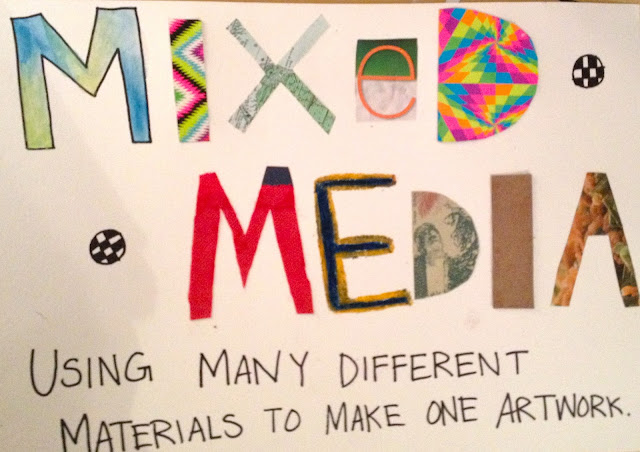
In retrospect, I would definitely simplify this lesson for 6th and 7th graders or make it into an 8th/ 9th grade project. However, I was very proud of what my students came up with.
For this lesson, we began by talking about how objects can hold meaning and even a narrative. I had students work in group to create their "still life narrative." They sketched their creation in their journals and filled out a worksheet explaining their narrative.
They traced their given objects onto the base paper I gave them so that we could use it every class.
For homework, students had to bring in an object that held personal meaning to them to add to their own drawing.
Then we started to sketch our compositions. I emphasized how to create an interesting composition before we started.
^(Good composition example)
^(bad composition example)
Student works in progress below (contour lines only, no shading)
Then, we worked on finding highlights and shadows in the drawing and making them into shapes. This didn't go well for my 6th graders. Many were confused, so I let this go.
After this, I had the students create four triangular sections of their artwork, then had them cut them out. (In retrospect, I WOULD NOT cut them out first. It was hard for some of my students to understand each piece would have a different media on it; I would have them cut the pieces out at the very end of the project).
The first wedge was shaded in pencil only. My example is below.
For each new media, I taught them a few simple techniques to use. Here are some examples for the oil pastel section:
My example for the pastel wedge:
My example for the water color wedge:
My example for the collage wedge:
(This was everyone's favorite part)
After we completed all of our wedges, I had the students glue their wedges back together on a piece of black card stock, leaving gaps in between each wedge. I also allowed them to cut out extra white space if they wanted to.
Pictured below is some of the amazing work they did:






































































